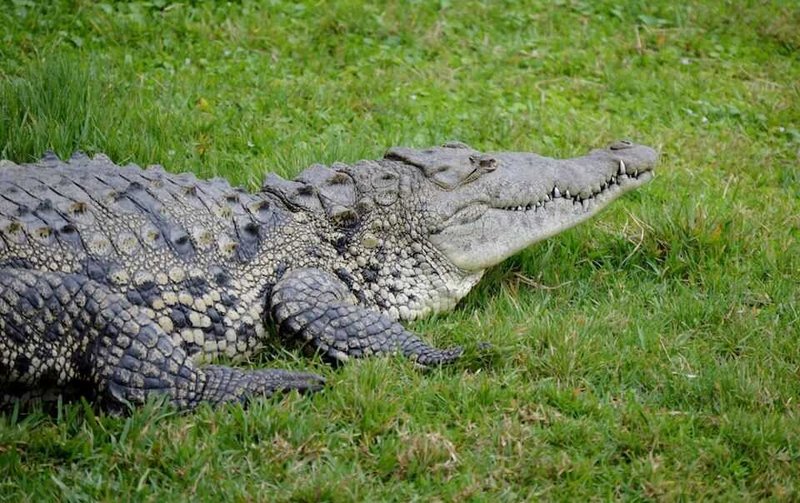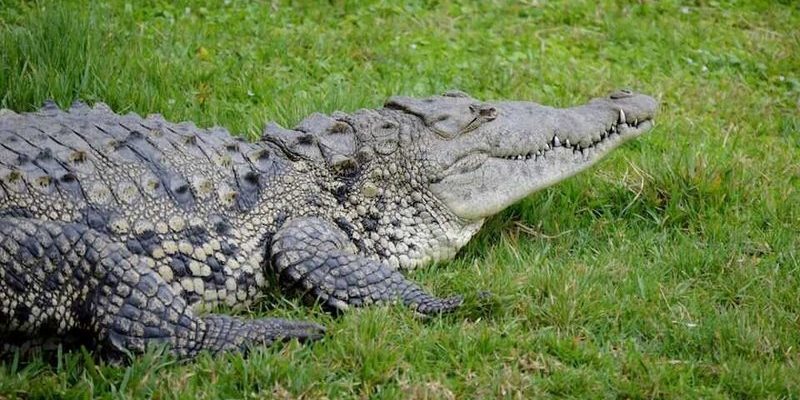
Let’s dive into the world of this extraordinary creature and explore how its unique traits not only help it survive but also make it one of nature’s ultimate survivors. From its powerful senses to its impressive camouflage, the American crocodile is truly a master of its domain.
Powerful Jaw and Teeth
Honestly, one of the most striking features of the American crocodile is its powerful jaw. With a bite force strong enough to crush bone, this reptile knows how to catch its dinner. Imagine trying to crack a nut with your hand—now imagine a tool that can do it for you. That’s essentially what the crocodile’s jaw does in the wild. Its teeth are designed for gripping and tearing; they don’t chew food like humans do. Instead, they grab it and swallow it whole, which is a pretty efficient strategy when you’re hunting.
These crocodiles can go after a variety of prey, from fish to birds and even small mammals. Their jaws are not just strong; they’re also incredibly agile. This adaptability allows them to take advantage of whatever food source is available, making them resilient in different habitats from freshwater swamps to coastal mangroves.
Camouflage: Nature’s Disguise
Have you ever played hide-and-seek? Camouflage is basically nature’s version of that game. The American crocodile has skin that blends in perfectly with its surroundings. This camouflage allows it to stay hidden while waiting for potential prey to come close. Just picture a rock in a riverbed—it’s easy to miss, right? The crocodile uses this same principle to become nearly invisible in the water.
Being able to stay hidden not only aids in hunting but also protects these reptiles from other predators. By lying still against the muddy banks of rivers or in shallow waters, they can wait for hours, conserving energy. This behavior is crucial in their survival, especially in habitats where food might be scarce.
Exceptional Hearing and Vision
You might be wondering how crocodiles spot their prey or hear danger coming. It all comes down to their exceptional senses. American crocodiles have acute hearing, which allows them to detect sounds from a distance. They can even hear vibrations made by animals moving near or in the water. Think of it as having the ultimate sound system at your disposal—able to catch the smallest noises that might signal a meal or a threat.
But it doesn’t stop there; their vision is equally impressive. Their eyes are adapted to see well both above and below water. This is particularly useful during hunting, as they can tell what’s happening around them, whether they’re submerged or on land. Thanks to this combination of hearing and sight, American crocodiles are adept hunters and can navigate their environments with confidence.
Cold-Blooded Efficiency
Being cold-blooded might sound like a disadvantage, but for the American crocodile, it’s a survival tactic. Unlike warm-blooded animals that need to maintain a constant body temperature, crocodiles can adjust to the temperature of their environment. This means they don’t need to eat as often to fuel a high metabolism. In hot climates, they bask in the sun to warm up. When it gets cooler, they can slow down their activity and conserve energy.
This efficiency allows American crocodiles to thrive in seasonal environments where food availability fluctuates. When food is abundant, they can eat to their heart’s content. But when times get tough, they can simply chill out (literally) and wait for better conditions. It’s a pretty smart strategy for surviving in the wild.
Reproductive Strategies
Reproduction is another crucial aspect of survival. American crocodiles exhibit interesting parental care that increases the chances of their offspring surviving. Female crocodiles carefully build nests to protect their eggs from potential threats. They often choose locations near water where the eggs can stay moist but also be hidden from predators.
Once the eggs hatch, the mother assists the baby crocodiles in getting to the water, often carrying them in her mouth. This level of care is quite rare among reptiles and shows how American crocodiles invest time and energy into ensuring their young have the best chance of survival. By increasing the survival rate of their hatchlings, they help ensure that their species continues to thrive in a sometimes hostile environment.
Unique Locomotion
Ever notice how crocodiles seem to glide effortlessly through the water? Their unique locomotion sets them apart. While they can walk on land, it’s in the water that they truly excel. Their long, muscular tails propel them forward, allowing them to swim swiftly to catch prey or evade danger. In fact, they can even perform a sort of “death roll” to overpower their prey, flipping it around to make it easier to eat.
On land, their movement is less graceful, but they can still navigate well enough to bask in the sun or move to new hunting grounds. The combination of agility in water and adaptability on land makes American crocodiles versatile survivors.
The American crocodile is a remarkable testament to survival in the wild. With adaptations like a powerful jaw, effective camouflage, and exceptional senses, it has mastered the art of living in diverse environments. Their cold-blooded nature and unique reproductive strategies further solidify their place as survivors in the animal kingdom.
So, the next time you hear about crocodiles, remember: they’re not just ferocious predators; they’re also adaptable creatures that have thrived on our planet for millions of years. Whether it’s their efficient hunting techniques or their clever ways of keeping their young safe, these reptiles have truly earned their title as survivors of the wild.

